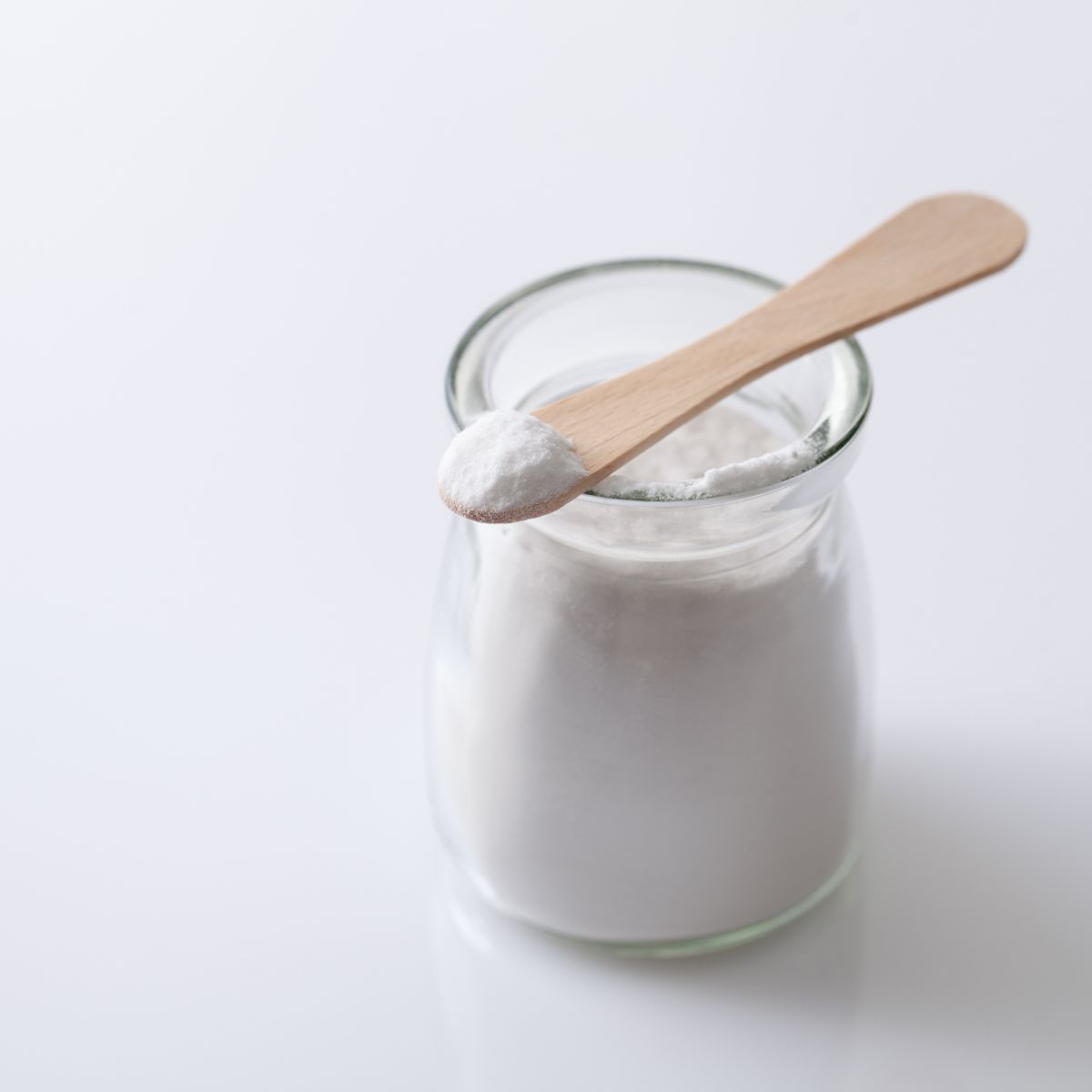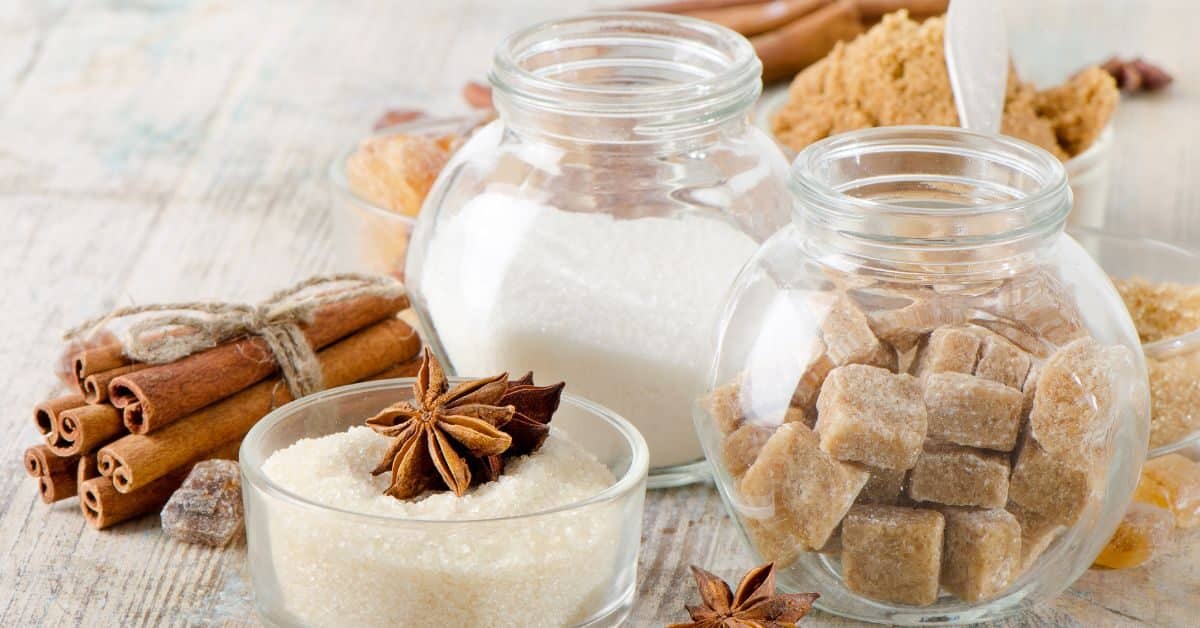

I consider myself lucky to have grown up in a household free of sweetened and carbonated beverages. As a result, I never developed a taste for soda. As a child, I was only dimly aware that artificial sweeteners existed. The only person we knew who used them was my Gran. A perpetual dieter, Gran would withdraw a tiny plastic container from her handbag whenever tea or coffee was served, tipping one or two tiny white sweetener pills into her cup.
This changed when I arrived in college and, in the fall of 1990, found myself living next door to a charming and sophisticated fellow student who drank Diet Coke all day. She shared that she disliked the taste of water, choosing Diet Coke instead as her first drink in the morning, as an accompaniment to every meal, and as her last drink at night (she even cleaned her teeth with it). I was stunned but kept my judgments to myself, and we quickly became close friends. I didn’t think more of her Diet Coke addiction until recently when I learned of studies connecting aspartame, the sweetener in Diet Coke, to all manner of medical issues.
Digging deeper, I discovered that aspartame has been mired in controversy from the very beginning of its use as an additive and that, almost 50 years on from its initial approval by the FDA, it remains one of the most studied food and beverage additives in the world. (Aspartame was granted FDA approval as a food additive in 1974 and as a beverage additive in 1983, nearly coinciding with the launch of Diet Coke in 1982.) Although the controversy around its initial approval is beyond the scope of this article, curious minds can learn more by doing a Google search for “Donald Rumsfeld and Aspartame.”

What Is Aspartame?
Aspartame (E951) is an artificial sweetener sold under numerous brand names, including NutraSweet, Equal, Sugar Twin, and Canderel. On a molecular level, it is a dipeptide manufactured from two naturally occurring amino acids (aspartic acid and phenylalanine). Manufacturers use an enzymatic process to make it from aspartic acid and phenylalanine methyl ester (the amino acid bonded to a methyl group). Its sweetness was discovered inadvertently in 1965, and it was eventually patented. Today, it is the most utilized artificial sweetener in the United States, used in over 6,000 processed food and beverage products and as a tabletop sweetener in more than 100 countries. By definition, whole plant foods do not contain aspartame.
In the gut, aspartame breaks down into its constituent parts, aspartic acid and phenylalanine, which are absorbed and enter the body. The methyl group from the modified phenylalanine is released in the gut to form methanol.
Aspartame has never been found in the blood or any organ after ingestion, meaning that any effect reported to occur in the body following ingestion of aspartame must be caused by one or more of its three constituents: aspartic acid, phenylalanine, or methanol. Methanol is very harmful when exposure is extremely high, such as from consumption of some home-distilled alcoholic spirits. However, by far the greatest amount of methanol produced in humans (some 90% on average) is generated naturally by the body from consuming pectin-containing fruits such as apples and citrus fruits. Indeed, the amounts of amino acids and methanol generated even by consuming 10 cans of diet soda are minuscule compared to the amounts generated in the body during normal digestion. For this reason, many people are skeptical that consuming aspartame within recommended limits could negatively impact human health. However, the story is not as simple as this, as we shall see.
Claimed Therapeutic Benefits of Aspartame
Aspartame and other non-nutritive sweeteners are popular among people looking for a sugarless route to satisfying their sweet tooth. That includes people with diabetes, people on sugar-restricting diets like keto, and people who are trying to lose weight. Since aspartame is composed of amino acids, a gram of aspartame contains four calories, the same as sugar. However, aspartame is 200 times sweeter than sugar, so a tiny amount of aspartame delivers the same sweetness factor while essentially cutting the calories to zero. And because aspartame doesn’t impact blood sugar levels, it’s marketed as a good choice for people with diabetes and others who need to monitor their blood sugar. Proponents of aspartame also argue that switching from sugar to aspartame improves dental health by lowering the risk of tooth decay and cavities.
For adults and children with overweight or obesity, there is limited evidence that switching from sugar to aspartame might also help manage weight in the short term. This evidence comes from short-term interventions (generally less than six months), specifically randomized control trials (RCTs) in which participants consume either sugar or non-sugar sweeteners (NSS) and researchers compare weight gain/loss over the period of the study. Such studies have demonstrated a minor reduction in body weight in adults consuming NSS compared to adults consuming sugar. Unfortunately, though not surprisingly, much less attention is paid to studies that compare switching from sugar-sweetened beverages to water (these show much more significant effects on weight loss than switching to NSS). It is also doubtful whether aspartame and other sugar substitutes can help people manage their weight over the long term.
Risks of Aspartame
A wide array of concerns have been raised about aspartame over the four decades since FDA approval. These concerns have included just about every acute or chronic condition you can think of, from headaches, migraines, and mood disorders to cardiovascular disease, cancer, Alzheimer’s disease, seizures, stroke, and dementia. But conclusive evidence demonstrating that aspartame directly causes any of these conditions does not exist. Despite many correlations, researchers have identified no plausible biological mechanism to demonstrate direct causation.
In May 2023, the World Health Organization (WHO) recommended against the use of the whole category of NSS (including aspartame) to reduce body weight or reduce the risk of chronic diseases such as diabetes.[1] Their recommendation is based on a 2022 systematic review of the most current scientific evidence, a special kind of review that assesses the quality of research studies when evaluating their implications.[2][3] This evidence review, which used the rigorous GRADE framework, found that using NSS, including aspartame, does not confer any long-term benefit in reducing body fat in adults or children. Results of the review also suggest that there may be potential undesirable effects from long-term use of NSS, such as an increased risk of type 2 diabetes, cardiovascular diseases, and all-cause mortality, as well as increased body weight.
The evidence for these associations comes from long-term observational prospective studies for which participants are recruited and followed over several years. WHO acknowledges that the associations observed could be a result of residual confounding variables that the study teams were unable to adjust for. For example, the people who consume the greatest amount of NSS may be the group most likely to consume other unhealthy foods. Nonetheless, WHO notes that many of the studies evaluated in their systematic review went to great lengths to adjust for potential confounding variables and still found significant associations between NSS intake and increased risk of type 2 diabetes.
The exact biological mechanisms responsible for these residual effects are unclear. However, one theory is that long-term consumption of NSS disrupts the gut-brain regulation of glucose metabolism. Even though aspartame breaks down into common molecules in the gut, its consumption may affect glucose metabolism. The sweet-taste receptors stimulated by NSS are the same receptors stimulated by sugar and these receptors cannot tell the difference between the two. They inform the brain that glucose has been consumed, and the brain transfers these signals to the gut. Furthermore, outside of an RCT, people often consume NSS-sweetened foods and beverages in the context of other foods that contain sugar and other carbohydrates. Even though NSS intake does not appreciably affect blood sugar levels in the short term, it is not much of a stretch to imagine how consumption of NSS would confuse the brain and gut over time, disrupting the mechanisms by which the body responds and regulates glucose.

Aspartame and Cancer Risk
It was against the backdrop of the May 2023 WHO recommendation against the use of the NSS for the specific purpose of reducing body weight or reducing the risk of chronic diseases such as diabetes that, in June 2023, the WHO’s International Agency for Research on Cancer (IARC) announced its first classification of aspartame.[4] The IARC classifies agents into one of four groups based on the strength of scientific evidence that they are a cancer hazard. They do not assess how likely the hazard is to occur and thus do not reflect the risk of developing cancer at a given exposure level. Therefore, when interpreting statements from IARC, it is critical to distinguish between hazard and risk levels. Just because something is hazardous doesn’t mean it poses a high risk. For example, consider the hazard to humans posed by traffic. A busy road is undoubtedly hazardous to pedestrians, but we can almost entirely avoid the risk by staying on the sidewalk and only crossing when traffic signs indicate that it’s safe to do so.
With that in mind, IARC’s four cancer hazard categories are:
- “carcinogenic to humans” (Group 1)
- “probably carcinogenic to humans” (Group 2A)
- “possibly carcinogenic to humans” (Group 2B), and
- “not classifiable as to its carcinogenicity to humans” (Group 3)
Group 1 carcinogens are things known to cause cancer, based on strong evidence that demonstrates both a correlation and biologically plausible mechanisms underpinning it. This group includes alcohol and tobacco use, processed meat consumption, arsenic, and solar radiation (UV rays).
Group 2A includes things that we believe probably cause cancer because there is sufficient convincing evidence for cancer in humans and/or experimental animals. Examples include red meat, anabolic steroids, emissions from high-temperature frying, night shift work, and hot beverages (above 149 degrees Fahrenheit).
Group 2B is designated when there is either 1) limited but not convincing evidence for cancer in humans or 2) convincing evidence for cancer in experimental animals, but not both. Examples include aloe vera extract, melamine, Asian-style pickled vegetables, and caffeic acid—a compound commonly found in vegetables, fruit, and coffee (which are actually associated with a lower risk of cancer)—and many less familiar chemicals.
Group 3 is a mixed bag. It includes compounds that have been tested extensively and for which there is no consistent evidence for or against classifying the substance as a carcinogen and also many compounds that no one has actually tested, perhaps because there is negligible risk of humans coming into contact with them.
The IARC assigned aspartame to Group 2B based on limited evidence for cancer in humans (specifically, for hepatocellular carcinoma, which is a type of liver cancer), limited evidence for cancer in experimental animals, and limited evidence related to the possible mechanisms for causing cancer. They also called for more research into the safety of aspartame.
The IARC has a history of reassessing the scientific evidence and moving substances between groups based on a change in the strength of that evidence. For example, when the IARC initially classified coffee in 1990, they assigned it to Group 2B, but in 2016, they reclassified it to Group 3 because of emerging strong evidence suggesting a lack of carcinogenicity. If more convincing scientific evidence becomes available, the IARC could similarly reassess aspartame.
The Dose Makes the Poison
At the same time that the IARC made its announcement, a joint expert committee reporting to both the UN Food and Agriculture Organization and the WHO on the topic of food additives (JECFA) announced that it would not change its recommendations on acceptable daily intake (ADI) of aspartame, concluding based on the same evidence as the IARC that there is no convincing evidence that consumption at or below the ADI poses a health risk.[4] (The JECFA ADI was set in 1981 at 40 milligrams per kilogram of body weight. This is lower than the FDA’s recommended limit of 50 mg/kg body weight. A person would have to consume 9–14 cans per day to exceed this ADI, assuming no other intake from other food sources.) In other words, the JECFA is not saying that there cannot be any cancer hazard at any consumption level, but only that there’s no convincing evidence of a health risk as long as daily consumption over a person’s life generally remains under the ADI. Like the IARC, JECFA called for more research.
So, what was the cancer-related scientific evidence that these two bodies considered? The epidemiological evidence on which the IARC based its classification comes from four human studies, two of which reported an association with an increased risk of primary liver cancer (that is, cancer that arises in the liver rather than cancer that starts elsewhere and spreads to the liver, or secondary liver cancer) and two more that reported an association with increased risk of cancer in general and obesity-related cancers in particular.[5][6][7][8] However, association/correlation does not necessarily mean causation, and there is no evidence of a biological mechanism that would explain how aspartame consumption could cause liver cancer. It’s a complicated question to research. Do people who eat a lot of aspartame get cancer because of aspartame? Or do high-aspartame consumers have something else in common that leads to their increased cancer risk? After all, aspartame use is likely to be higher among people living with diabetes and obesity. It seems plausible that those conditions could be the root cause of a higher cancer risk.
In addition, the evidence that aspartame is carcinogenic in experimental animals is limited to rodent studies produced by a single independent research group called the Ramazzini Institute. These studies, while free of industry influence, are thought to have serious methodological flaws. For example, the control group was drawn from a different litter of mice than the test group. The best practice in animal studies is to control for possible genetic differences by combining litters.
Recent Neurological Concerns
In August 2023, a paper in the journal Nature shared the findings of a new animal study that assessed the impact of daily aspartame consumption on various measures of mental functioning in mice.[9] The study found that consumption of aspartame at doses equivalent to only 7–15% of the FDA-recommended maximum daily intake value for humans (roughly equivalent to human consumption of two to four eight-ounce diet sodas per day) produces significant spatial learning and memory deficits in mice, relative to controls, that are detectable as early as four weeks into the experiment. Moreover, male mice transmitted these cognitive deficits to their offspring, suggesting that aspartame’s adverse effects on cognition may be heritable, at least for one generation. The researchers identified various potential biological mechanisms, but more research is needed to determine causality.

Sweet Whole Food Alternatives to Aspartame
Of course, you don’t need to be familiar with all the scientific evidence to know to avoid aspartame. One of the best things about the whole food, plant-based diet is its simplicity: you eat only whole plant foods prepared in a minimally processed manner, without added oils, sugar, and salt. Aspartame is not found in whole plant foods and thus would never be consumed as part of a whole food, plant-based diet.
Nonetheless, you can still enjoy plenty of naturally sweetened treats! Try making a healthy mocktail if you would like something sweet to drink. And instead of replacing sugar with aspartame or other NSS, you can try these sweet alternatives in your baked goods and snacks:
- Dates or date pate
- Date sugar (made by grinding dried dates)
- Puréed fruit, such as bananas
- Sweet potato (I often add half a baked Japanese sweet potato to my kale smoothie in the morning and can attest that they add a wonderful, rich sweetness.)
Small amounts of maple syrup or blackstrap molasses also appear in some whole food, plant-based recipes and can be acceptable for occasional use. That said, if you resist using such intensely sweet substances for a few weeks, your taste buds will evolve and you will find yourself delighted by the sweetness of fruit, whether it’s an apple to snack on, a handful of raisins in your oatmeal, a diced persimmon in your arugula salad, or some dried apricots in your Moroccan chickpea stew.
References
- World Healh Organization (WHO). WHO advises not to use non-sugar sweeteners for weight control in newly released guideline. May 15, 2023; accessed November 3, 2023. https://www.who.int/news/item/15-05-2023-who-advises-not-to-use-non-sugar-sweeteners-for-weight-control-in-newly-released-guideline
- Rios-Leyvraz M, Montez J. Health effects of the use of non-sugar sweeteners: a systematic review and meta-analysis. Geneva: World Health Organization; 2022. Online access: https://www.who.int/publications/i/item/9789240046429
- Skelly AC, Chapman J. Evidence-based medicine (EBM): origins and modern application to spine care. Evid Based Spine Care J. 2011;2(1):11-16. doi:10.1055/s-0030-1267081
- IARC & JECFA. Joint press release: Aspartame hazard and risk assessment results released. https://www.iarc.who.int/wp-content/uploads/2023/07/Aspartame_PR.pdf
- Stepien M, Duarte-Salles T, Fedirko V, et al. Consumption of soft drinks and juices and risk of liver and biliary tract cancers in a European cohort. Eur J Nutr. 2016;55(1):7-20. doi:10.1007/s00394-014-0818-5
- Jones GS, Graubard BI, Ramirez Y, et al. Sweetened beverage consumption and risk of liver cancer by diabetes status: A pooled analysis. Cancer Epidemiol. 2022;79:102201. doi:10.1016/j.canep.2022.102201
- Debras C, Chazelas E, Srour B, Druesne-Pecollo N, Esseddik Y, et al. (2022) Artificial sweeteners and cancer risk: Results from the NutriNet-Santé population-based cohort study. PLOS Medicine 19(3): e1003950. https://doi.org/10.1371/journal.pmed.1003950
- McCullough ML, Hodge RA, Campbell PT, Guinter MA, Patel AV. Sugar- and Artificially-Sweetened Beverages and Cancer Mortality in a Large U.S. Prospective Cohort. Cancer Epidemiol Biomarkers Prev. 2022;31(10):1907-1918. doi:10.1158/1055-9965.EPI-22-0392
- Jones SK, McCarthy DM, Stanwood GD, Schatschneider C, Bhide PG. Learning and memory deficits produced by aspartame are heritable via the paternal lineage. Sci Rep. 2023;13(1):14326. Published 2023 Aug 31. doi:10.1038/s41598-023-41213-2
Copyright 2025 Center for Nutrition Studies. All rights reserved.
Deepen Your Knowledge With Our
Plant-Based Nutrition
Certificate
Plant-Based Nutrition Certificate
- 23,000+ students
- 100% online, learn at your own pace
- No prerequisites
- Continuing education credits



